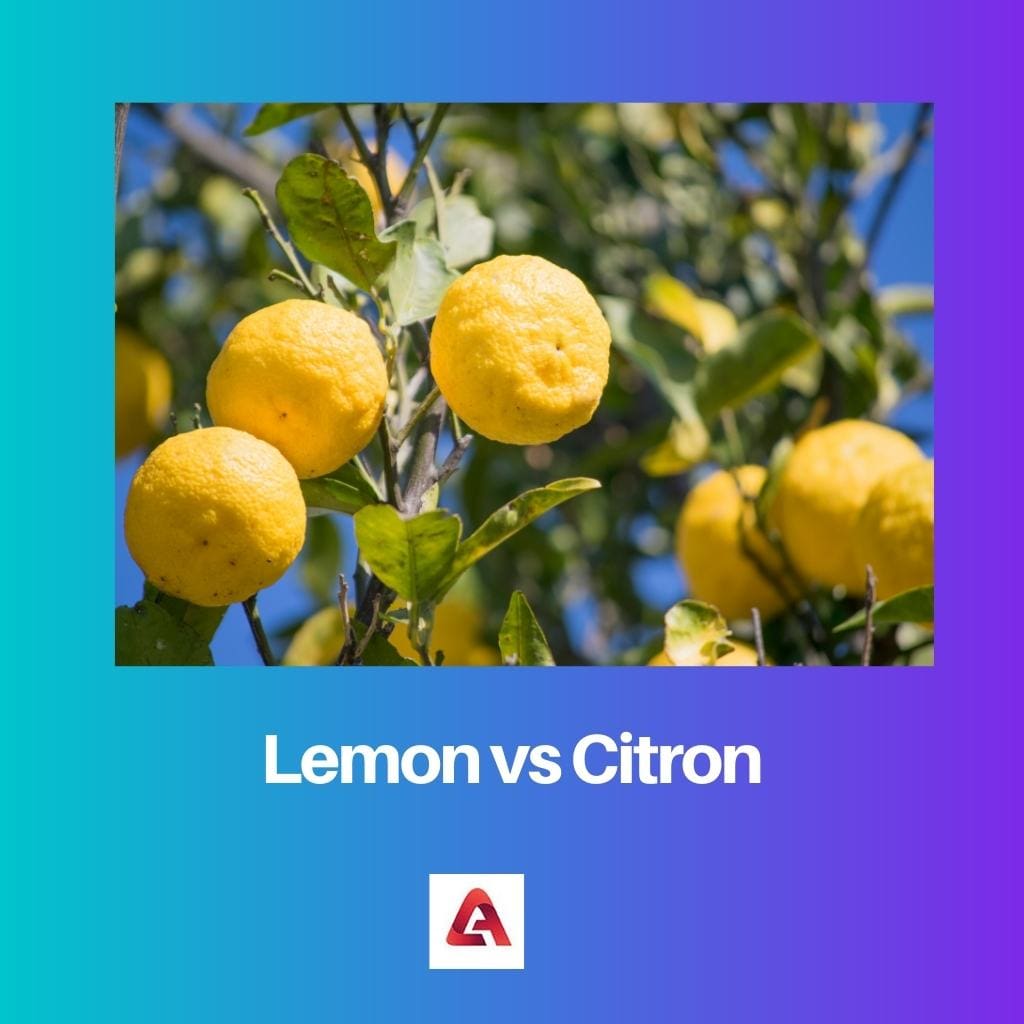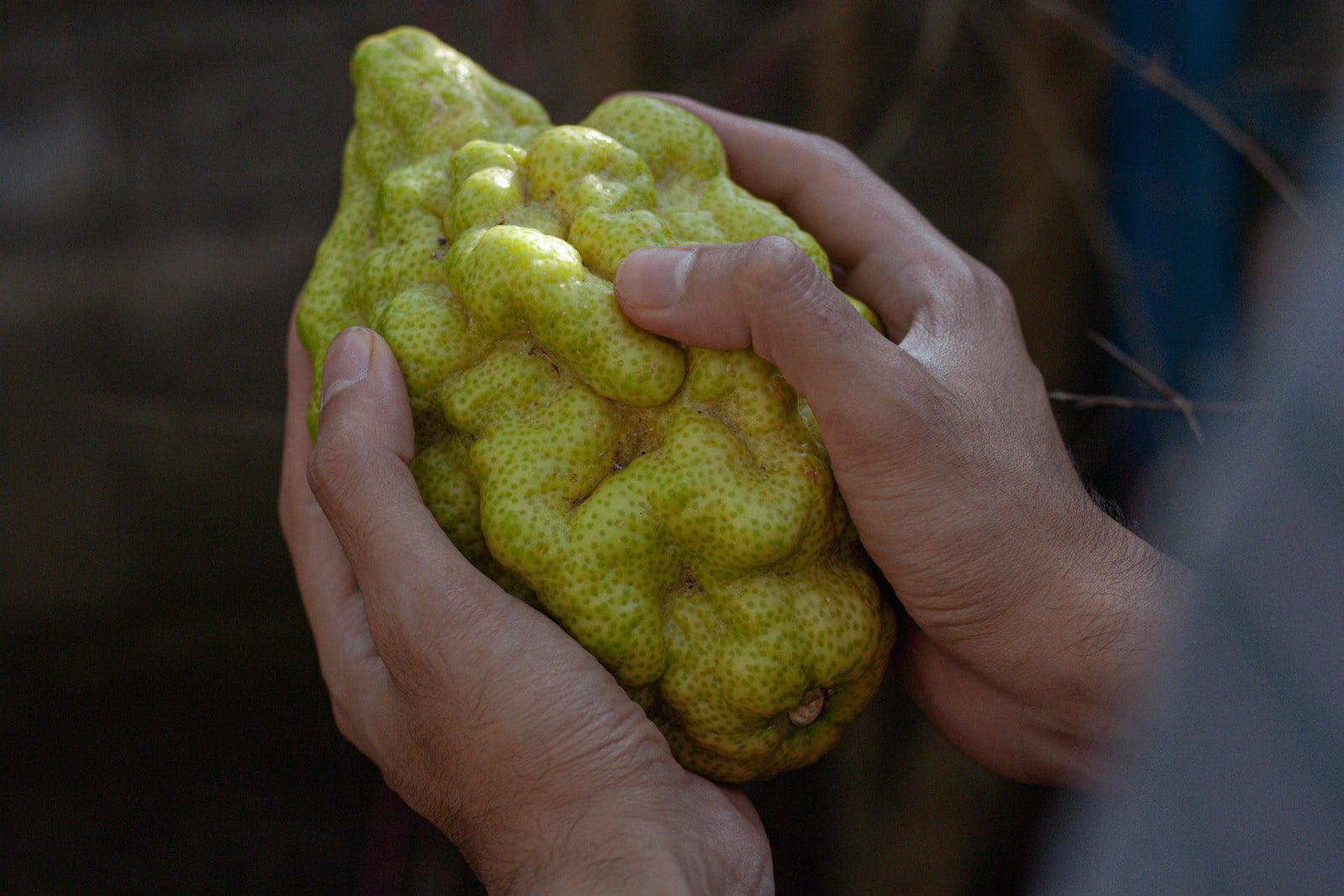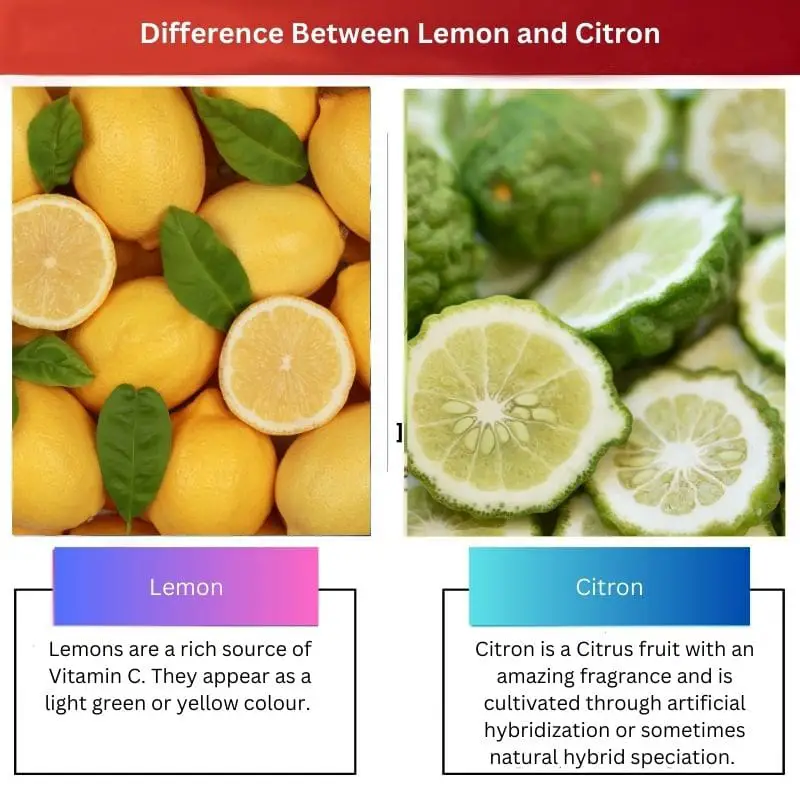Due to the presence of an abundance of Vitamin C, Citrus fruits are most popular among health enthusiasts.
Due to their high health values, more often, they are in the limelight.
The two most common fruits are lemon and Citron. Their use in cooking is unmatchable too. They are excessively used in starters.
Oils, perfumes, flavourings, and medicinal products are extracted from the flowers and these fruits. However, according to the layman, there is little difference between a lemon and a citron.
Therefore, this article will emphasize how lemons are different from Citron.
Key Takeaways
- Lemon is a small, yellow fruit with a sour taste, while Citron is a large, yellow fruit with a thick rind and a mild, sweet taste.
- Lemon is commonly used in cooking, baking, and beverages, while Citron is used to make candied fruit and fruit preserves.
- Lemon has a high citric acid content, while Citron has a low acidity level and is used as a flavoring agent in liqueurs and perfumes.
Lemon vs Citron
The difference between lemon and Citron is that lemon gives more juice when squeezed, but Citron gives comparatively less juice than lemons. Lemon, as a whole, can be of great use. Its pulp or rind, zest, and juice, are all used in various things. The biggest visible distinguishing feature between lemon and Citron is their shape.

Lemons are circular or spherical. Lemons are used at home for cooking purposes. They are grown naturally in Indian gardens for everyday use. Although both fruits are rich in Vitamin C, their usage differs. Lemon juice drinks are very popular in combating the hot scorching sun.
Citrons can be seen in a variety of shapes. Citrons contain less juice than lemon as the pulp is considerably dry. Citrons are used commercially to treat certain health problems, such as seasickness. However, they are grown commercially through the process of artificial hybridization.
Comparison Table
| Parameters Of Comparison | Lemon | Citron |
|---|---|---|
| Shape | Lemons are found in spherical shape only. | Citrons are found in variable shapes, such as finger-like. |
| Size | The diameter of lemons varies between 1- 4 centimetres. | Citrons are much bigger than lemons. |
| Colour | Lemons are used extensively for cooking and washing purposes. | Lemons are light green or yellow. |
| Texture of Pulp | Lemons have juicy pulp. | Citrons have dry pulp. |
| Usage | Lemons are used extensively for cooking and washing purposes. | Citrons are used extensively for medicinal purposes. |
What is Lemon?
Lemons are a rich source of Vitamin C. They appear as a light green or yellow colour.
The main purpose behind their abundant use in cooking is their acid juice.
Lemon is used in various drinks for flavouring purposes as well. The texture of the skin of the lemon is quite leathery. The pulp is very juicy and has a gentle aroma.
Lemons give a sour taste. This distinctive taste makes it one of the key ingredients in baking and cooking.
Except for the seeds, all the parts of the lemon are used in cooking or decorating the dish. Be it its juice or the zest of the rind, all have some usage.
Lemons are the favourite ingredients in the marination. They are used for fish and pork marination.
Several cuisines, such as Indian and Moroccan cuisine, use these sour taste fruits in their preparation. Sometimes its juice is also used as a preservative too.
When the juice is sprinkled on the sliced pieces of avocados, bananas and apples, it prevents the cut fruits from turning into an awful brown colour.

What is Citron?
Citron is a Citrus fruit with an amazing fragrance and is cultivated through artificial hybridization or sometimes natural hybrid speciation.
However, unlike lemons, the pulp of Citron is dry.
Insipid juice is present in less quantity in Citrons. Ancient studies suggest that, solely for medicinal purposes, citrons are used in abundance.
Citrons are helpful against problems like pulmonary illnesses, seasickness, intestinal problems and many more on the list.
The pulp of citrons produces oil, which acts as an effective antibiotic. The rind present on the outermost layer also gives oil.
The yellow-coloured pulp or rind of citrons can be considered a gift to mankind. Citron products and candies are trendy in Southern Italy and Europe, as Citron originated only from those places.
Citrons are found in various shapes and sizes. However, they are bigger than lemons but possess a variety of shapes. Various factors are responsible for this possession of variable shapes of citrons.
They are found in interesting variable shapes. Sometimes, citrons are found in finger shape as well.

Main Differences Between Lemon and Citron
- Lemons are used for cooking by the common man and sometimes for washing due to their acidic juice. In contrast, citrons are used extensively in the medicinal field to tackle illnesses like seasickness and intestinal problems.
- Lemons are found almost everywhere and are quite famous. At the same time, the availability of citrons is limited to certain places, like Italy and Europe.
- The size of lemons is small, whereas the size of Citrons is much larger.
- The pulp of the lemon is juicy, whereas the pulp of Citron is dry.
- Lemons are available only in a spherical shape, whereas citrons are available in variable shapes, such as finger or ginger.
- Lemons are greenish-yellow or yellow, whereas Citrons are bright yellow.
- Lemons contain more juice, whereas Citrons contain less juice than lemons.
- Lemons are grown through natural methods. However, Citrons need artificial hybridization for their growth.




